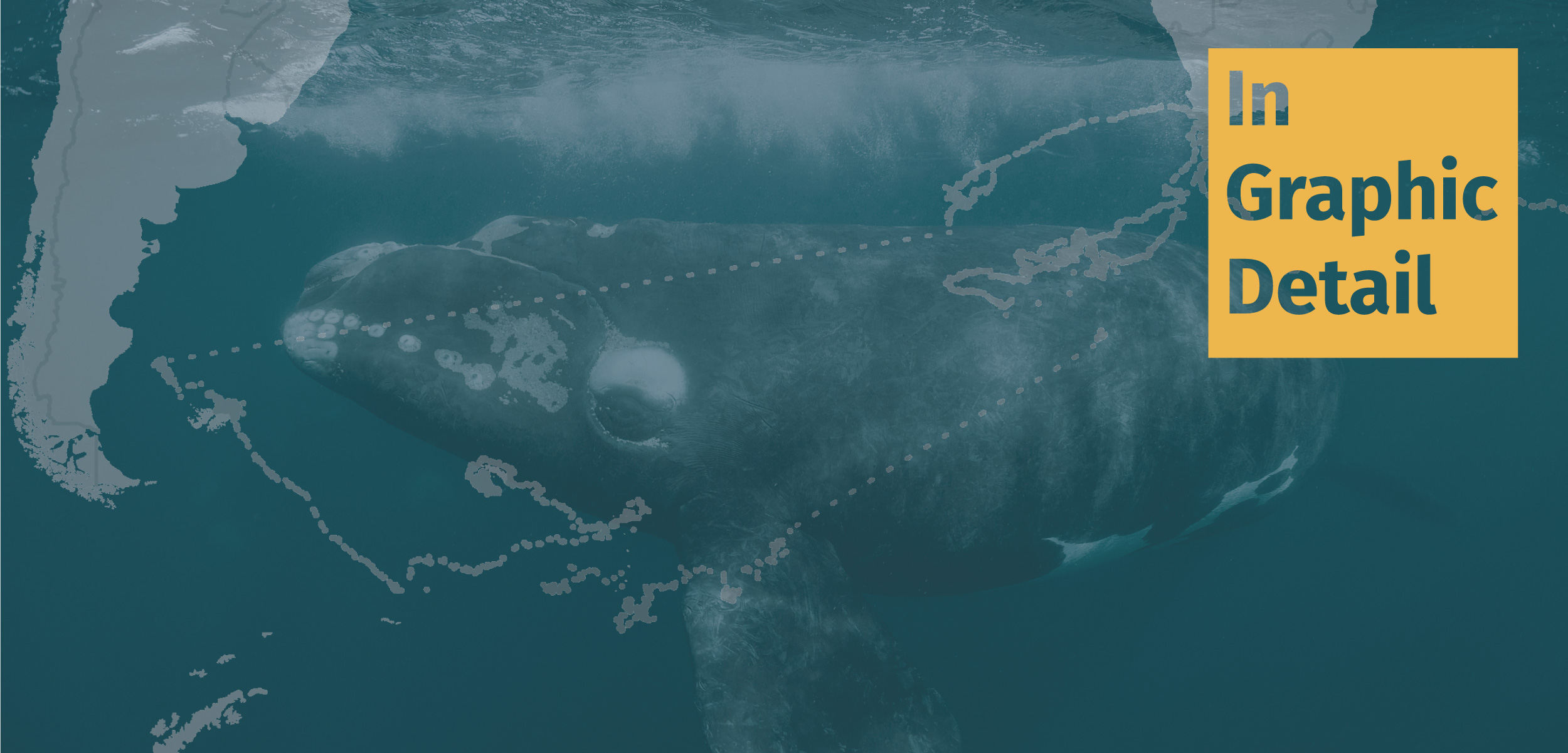In Graphic Detail: The Longest Southern Right Whale Migration
Why did the whale cross the Atlantic Ocean? Perhaps the grass was greener on the other side.
Article body copy
The satellite tracker for southern right whale 221423 had been silent for four months before researcher Matthew Germishuizen finally got a ping indicating its location. At first, he thought it was a mistake. The last time he’d heard from the whale was on December 14, 2021, in the Atlantic Ocean around 3,000 kilometers off the South African coast. The ping that came on April 19, 2022, revealed that the whale was another 4,450 kilometers away—off the coast of Argentina.
Whale 221423 became the first scientifically documented case of a southern right whale crossing the Atlantic.
“It was a total shock,” says Germishuizen, a doctoral candidate at the University of Pretoria in South Africa. Even more shocking—in what the researcher calls a “needle in a haystack moment”—a colleague in the Falkland Islands happened to photograph whale 221423 as it swam past.
Southern right whales routinely arrive in coastal South Africa in early June to rear calves before migrating to their Antarctic feeding grounds around October. Scientists have been conducting aerial surveys of this population for over 40 years, and over the last decade, they’ve noticed migratory changes.
“Unaccompanied adults—adults without calves—have virtually stopped coming to our shores,” says Germishuizen. He also noted that the whales are bearing calves less frequently, and another study reported reduced fat reserves among whale mothers over the past few decades.
To investigate the migratory changes in more detail, researchers tagged four whales in 2021 and tracked them for up to 369 days. One whale traveled southeast from South Africa to the Crozet Islands, and another headed southwest to Bouvet Island—unsurprising, as these are well-known feeding grounds. Another whale traveled an unexpected 9,000 kilometers to the South Sandwich Islands, a feeding area typically frequented by western right whales. Whale 221423—the record holder—swam to coastal Argentina, traveling a total of 15,288 kilometers. This distance far exceeded the findings of a previous tagging study that found the longest distance to be around 7,000 kilometers.
Why did whale 221423 travel so far? Probably for krill, the right whales’ main food. As sea ice conditions change off the Antarctic coast, krill abundance has decreased. Germishuizen and his team speculate that southern right whales are adapting their routes to follow the food, either staying farther north to feed on less desirable zooplankton, like copepods, or venturing to krill-rich waters off Argentina’s coast. Less krill would also explain the deteriorating maternal body condition and fewer births.
Germishuizen and his colleagues have continued satellite tagging right whales and will release their data in the coming years. Knowing the whales’ migratory routes can help inform conservation efforts, he says, as well as draw attention to how climate change is affecting life in the Southern Ocean.


